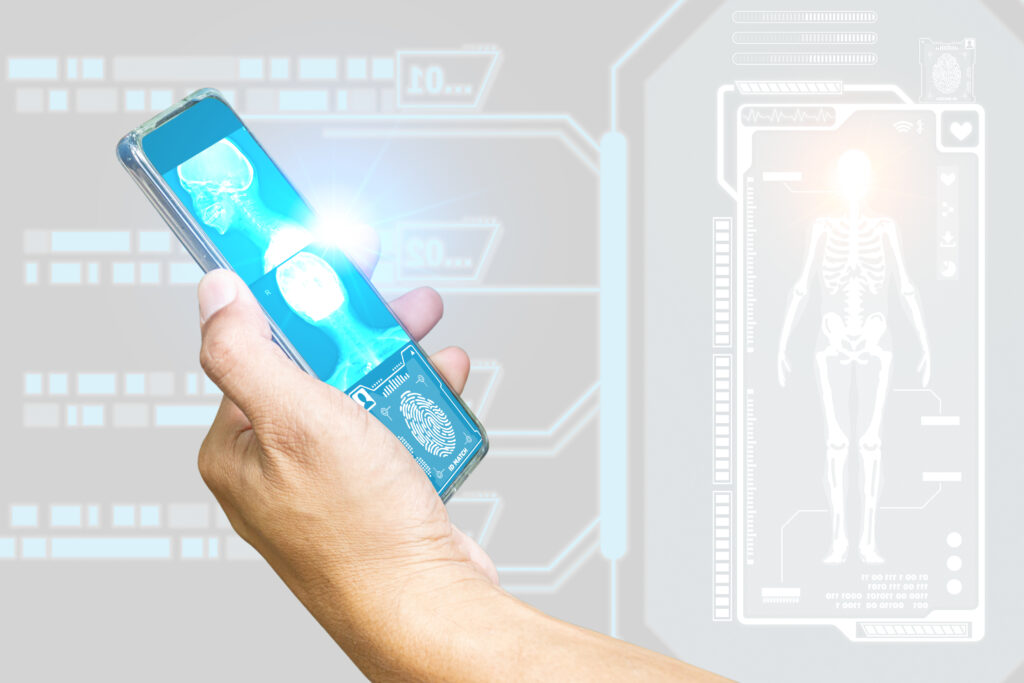Thoracic and lumbar spine


Thoracic and Lumbar Spine
The thoracic and lumbar spine are vital segments of the human vertebral column, playing crucial roles in providing structural support, flexibility, and protection for the spinal cord. The thoracic spine, located in the upper and mid-back region, is characterized by twelve vertebrae attached to the ribcage, contributing to stability and protecting vital organs. Meanwhile, the lumbar spine, situated in the lower back, consists of five vertebrae and bears a significant load, facilitating movement and weight distribution.
Together, the thoracic and lumbar regions form a dynamic junction between the rigid thoracic spine and the more mobile lumbar spine, allowing for a range of movements while maintaining overall stability. Proper care and attention to these spinal segments are essential for maintaining overall spinal health, preventing injuries, and ensuring optimal function in daily activities.
Discectomy
Under the expert care of Dr Sherief Elsayed, a discectomy becomes a precise and effective solution for individuals dealing with spinal disc issues. A discectomy is a surgical procedure designed to alleviate pain caused by herniated or damaged discs in the spine. Our spine surgeon employs advanced techniques to carefully remove the portion of the disc that is impinging on spinal nerves, aiming to relieve pain and restore functionality.
Dr Sherief’s approach involves a comprehensive assessment of each patient’s condition, ensuring personalized and targeted treatment plans. Dr Sherief Elsayed strives to reduce discomfort, enhance recovery time, and optimize long-term outcomes for individuals seeking relief from disc-related concerns. The patient-centric care he provides ensures that individuals receive the highest standard of treatment, promoting spinal health and improving overall quality of life.


Microscopic Discectomy
Microscopic Discectomy is a state-of-the-art solution for individuals grappling with spinal disc issues. Dr Sherief Elsayed employs advanced microscopic techniques to perform precise and targeted removal of herniated or damaged disc material, explicitly focusing on the affected area without compromising surrounding healthy tissue.
Microscopic Discectomy, being a minimally invasive procedure, aims to alleviate pain and symptoms associated with disc herniation while minimizing disruption to the surrounding structures. Dr Sherief’s patient-centered approach involves a thorough evaluation of each individual’s condition, ensuring tailored treatment plans that prioritize optimal outcomes and quicker recovery times.
With a commitment to utilizing modern techniques, Dr Sherief provides compassionate and comprehensive care to individuals seeking relief from disc-related concerns. The emphasis on precision and minimally invasive methodologies underscores his dedication to enhancing patient well-being and restoring spinal health effectively.
Endoscopic Discectomy
Endoscopic Discectomy, under Dr Sherief Elsayed’s expertise, involves the removal of herniated or damaged disc material through a small incision, minimizing disruption to surrounding tissues. This advanced technique offers the advantages of reduced postoperative discomfort, faster recovery, and a more streamlined surgical experience.
Dr Sherief’s commitment to innovation in spinal surgery is evident in his adoption of endoscopic methodologies, providing patients with a modern and effective alternative to traditional open procedures. By combining technical proficiency with a patient-centered approach, Dr Elsayed ensures that individuals receive personalized care that prioritizes optimal outcomes and an improved quality of life.


Posterior Lumbar Decompression
Posterior Lumbar Decompression involves the removal of bone or tissue contributing to nerve compression through a posterior approach, allowing direct access to the affected spinal structures. Dr Sherief Elsayed employs his surgical skills to ensure a targeted and effective intervention while preserving spinal stability.
Along with patient-centric care, Dr Sherief tailors each line of treatment to the unique needs of the individual, emphasizing comprehensive evaluation and minimally invasive approaches when possible. With a blend of technical expertise and a compassionate approach, Dr Sherief strives to optimize outcomes and improve the quality of life for his patients undergoing posterior lumbar decompression.
Posterior Lumbar Decompression and Non-Instrumented Fusion / Instrumented Fusion
Posterior Lumbar Decompression focuses on alleviating nerve compression caused by spinal stenosis or disc herniation. Dr Sherief Elsayed employs precise techniques to remove the problematic tissue, restoring optimal spinal function.
Non-instrumented Fusion involves the fusion of spinal segments without additional hardware. This technique promotes natural bone healing and stability. In contrast, Instrumented Fusion utilizes implants or devices to enhance spinal fusion, providing additional support during the healing process. This advanced technology ensures that individuals receive the most suitable treatments for their unique spinal conditions, ultimately aiming for enhanced mobility and a better quality of life.


Posterior Lumbar Interbody Fusion (PLIF)
PLIF is a comprehensive approach to spinal fusion that focuses on stabilizing and relieving pressure on the affected spinal segments.
During a PLIF procedure, Dr Sherief Elsayed accesses the spine through the posterior (back) approach. He removes the damaged intervertebral disc, creating space for a bone graft or a cage to be inserted between the adjacent vertebrae. This promotes fusion, allowing the vertebrae to grow together over time. Additionally, instrumentation such as screws and rods may be used to provide immediate stability while fusion occurs.
PLIF is particularly effective for conditions like degenerative disc disease, spondylolisthesis, or disc herniation that hasn’t responded to non-surgical treatments. His expertise in PLIF ensures that patients receive individualized care with a focus on restoring spinal stability, reducing pain, and improving overall function. His commitment to advanced and patient-centered interventions makes him a trusted partner in the journey toward optimal spinal health.
Posterior Thoracic Decompression and Fusion For Metastatic Spinal Cord Compression or Infection
Metastatic spinal cord compression (MSCC) occurs when cancer from another part of the body spreads to the spine, putting pressure on the spinal cord. Infections affecting the thoracic spine can also lead to compression and neurological symptoms. During the procedure, Dr Elsayed accesses the thoracic spine through a posterior approach. The goal is to decompress the spinal cord by removing the tumor or infected tissue causing compression. Fusion is then performed to stabilize the affected spinal segments, preventing further damage and promoting healing.
This advanced intervention is crucial in managing the challenges posed by metastatic spinal cord compression or infection, aiming to relieve pain, restore spinal stability, and preserve neurological function. Dr Elsayed’s commitment to providing individualized and advanced care makes him a trusted partner in addressing complex spinal conditions.


Thoracolumbar Fracture Reduction and Stabilisation
Thoracolumbar Fracture Reduction and Stabilisation specialized intervention is designed to address fractures in the thoracic and lumbar regions of the spine, providing stability and promoting optimal healing. During this procedure, our surgeon Dr Sherief Elsayed, employs advanced surgical techniques to realign and reduce the fractured vertebrae in the thoracolumbar region. Stabilization is then achieved through the use of specialized implants such as screws, rods, or plates. This ensures apt alignment of the spine and prevents further damage or misalignment.
The goal of Thoracolumbar Fracture Reduction and Stabilisation is to relieve pain, restore spinal stability, and facilitate the healing process. Dr Sherief’s commitment to individualized care, coupled with his surgical expertise, makes him a trusted choice for patients seeking comprehensive solutions for thoracolumbar fractures.
Vertebroplasty
Vertebroplasty is a minimally invasive surgical intervention designed to address vertebral compression fractures, particularly those caused by osteoporosis or other conditions.
In this procedure, Dr Sherief utilizes advanced imaging guidance to navigate a catheter precisely into the fractured vertebra. Once in position, bone cement is injected into the fractured area, stabilizing the vertebral structure and providing immediate pain relief. This innovative technique helps restore vertebral height, alleviate pain, and enhance overall spinal stability.
Dr Sherief’s approach to Vertebroplasty reflects his commitment to utilizing cutting-edge technologies and personalized treatment plans to improve the quality of life for patients suffering from vertebral compression fractures. His expertise and dedication make him a trusted choice for individuals seeking effective and minimally invasive solutions for spinal conditions.


Kyphoplasty
Kyphoplasty aims to stabilize fractured vertebrae, reduce pain, and restore vertebral height.
This procedure uses advanced imaging guidance to navigate a special balloon catheter into the fractured vertebra. Once in position, the balloon is inflated to create a cavity within the bone. This cavity is then filled with bone cement, which stabilizes the fractured vertebra and helps alleviate pain. Kyphoplasty not only addresses the immediate pain associated with vertebral fractures but also aims to restore spinal alignment and function.
Dr Sherief Elsayed’s expertise in performing kyphoplasty reflects his commitment to providing state-of-the-art spinal interventions tailored to each patient’s unique needs. With a focus on minimally invasive approaches, he strives to enhance the overall well-being and quality of life of individuals experiencing vertebral compression fractures.
Anterior Lumbar Discectomy and Lumbar Disc Replacement
Anterior Lumbar Discectomy and Lumbar Disc Replacement are advanced spinal procedures designed to alleviate pain, improve mobility, and restore functionality in the lumbar spine.
Anterior Lumbar Discectomy involves accessing the lumbar spine through the front (anterior) approach. Dr Sherief carefully removes the damaged or herniated disc material that may be causing compression on nerve roots, leading to pain and other symptoms. This procedure aims to decompress the affected nerves and provide relief from lumbar spine issues.
Lumbar Disc Replacement, on the other hand, is a surgical option that involves replacing a damaged or degenerated lumbar disc with an artificial disc. This procedure is intended to maintain natural motion in the spine while addressing disc-related problems. Dr Sherief’s expertise in utilizing these advanced techniques reflects his commitment to providing innovative and effective solutions for patients experiencing lumbar spine issues.


Anterior Discectomy for Thoracic Disc Prolapse and Myelopathy
Anterior Discectomy for Thoracic Disc Prolapse and Myelopathy is a specialized surgical procedure that addresses thoracic disc issues leading to myelopathy. This advanced technique involves accessing the thoracic spine from the front (anterior) to carefully remove the damaged or herniated disc material causing compression on the spinal cord.
Thoracic disc prolapse and myelopathy can result in symptoms such as weakness, numbness, and problems with coordination. Anterior Discectomy aims to alleviate these symptoms by relieving pressure on the spinal cord and nerves. Dr Sherief’s expertise in this procedure reflects his dedication to providing comprehensive spinal care and tailored solutions for patients with complex thoracic disc issues.
By utilizing advanced surgical techniques, our spine surgeon aims to optimize outcomes and improve the quality of life for individuals experiencing thoracic spine problems. Each patient’s treatment plan is personalized to address their specific condition, ensuring the most effective and innovative solutions for thoracic disc prolapse and myelopathy.
Thoracolumbar Corpectomy and Anterior Column Reconstruction
Thoracolumbar Corpectomy and Anterior Column Reconstruction is a surgical procedure performed to treat complex conditions such as fractures, tumors, and infections affecting the thoracolumbar spine. This specialized procedure involves the removal of a vertebral body (corpectomy) in the thoracolumbar region, followed by reconstruction of the anterior column to restore spinal stability.
Fractures, tumors, and infections in the thoracolumbar spine can lead to instability and compromise the structural integrity of the spine. Thoracolumbar Corpectomy and Anterior Column Reconstruction are designed to alleviate these issues and provide support to the spine. By employing innovative surgical techniques, Dr Sherief Elsayed aims to achieve optimal outcomes and enhance the overall well-being of individuals facing thoracolumbar spine-related challenges. Each patient receives personalized care, ensuring the treatment plan is tailored to address their specific condition and restore spinal function effectively.




